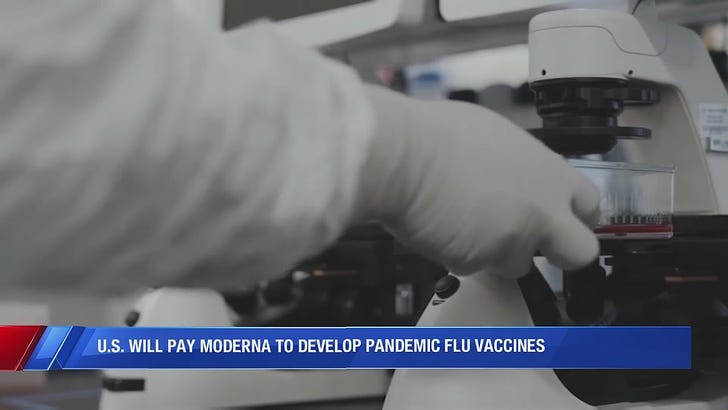U.S. government will pay Moderna $176 million to develop an mRNA bird flu pandemic vaccine
The H5N1 virus was detected earlier this year in dairy cows and has spread to more than 135 herds in 12 states and infected three people to date, all with mild cases. Federal health officials stress that the risk to the wider population remains low.
https://www.pbs.org/newshour/health/u-s-government-will-pay-moderna-176-million-to-develop-an-mrna-bird-flu-pandemic-vaccine
Wonder why we need another RNA experimental vaccine when all cases are VERY MILD!
August 13, 2024
The FDA has released the results of the second retail sampling survey of retail dairy products. (Information on the first survey is available below.) The second sampling survey, coordinated with USDA for the analyses, tested 167 dairy products collected at retail locations for highly pathogenic avian influenza A (H5N1). The samples included pasteurized fluid milk and products made from pasteurized milk, such as pasteurized cheeses, cream cheese, butter, ice cream. The samples also included aged raw milk cheese, a product from milk that was not pasteurized. No viable H5N1 virus was detected in the products.
https://www.fda.gov/food/alerts-advisories-safety-information/updates-highly-pathogenic-avian-influenza-hpai
Pasteurization is heating milk to 161 degrees Fahrenheit, held at that temperature for 15 seconds, then cooled quickly. The heat kills infectious microbes and works!
LEAVE OUR COWS ALONE
and here it comes, show me the $$$…
August 8, 20204
Vaccination Recommendations per CDC
Getting a seasonal flu vaccine will not protect against H5N1 bird flu
While getting a seasonal flu vaccine only prevents seasonal flu and will not protect against H5N1 bird flu, it is important that people who may have frequent exposure to infected or potentially infected birds or other animals get a seasonal flu vaccine, ideally 2 weeks before their potential exposure. This is because it can reduce the prevalence and severity of seasonal flu and might reduce the VERY RARE RISK of co infection with a human seasonal virus and an avian virus at the same time, and the theoretical risk that reassortment between the two could result in a NEW virus. Such dual infections, while very rare, could theoretically result in genetic reassortment of the two different influenza A viruses and lead to a new influenza A virus that has a different combination of genes, and which could pose a significant public health concern.




🙄🙄🙄 If I see a requirement come up for me to have one of these I might have to resign. There will be plenty who will take it and blame follow up issues on aging or wtf makes them feel better. If this one is shedding too... welp sayonara "health care professionals".
I’m jostling to be first in line to reject such a product.